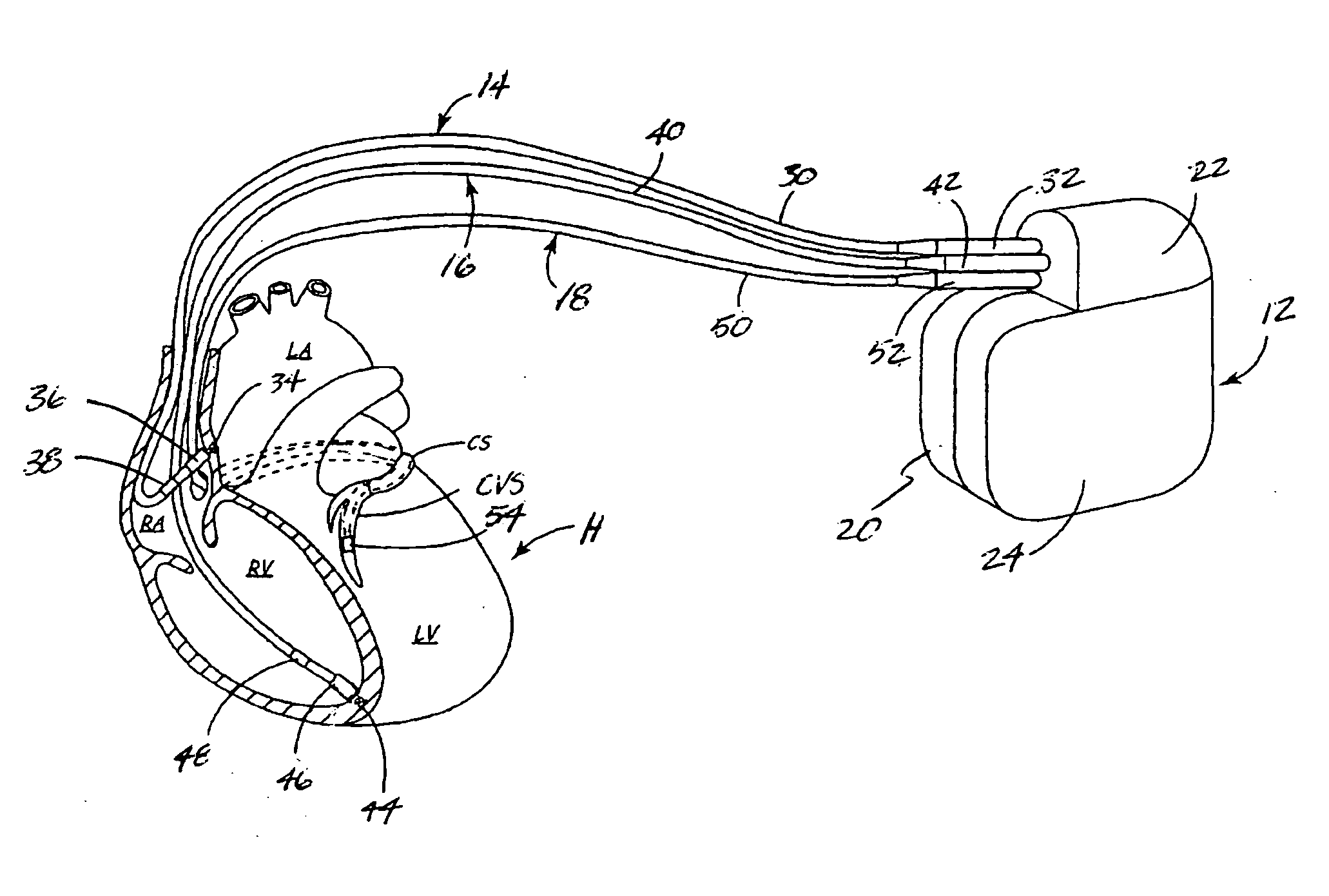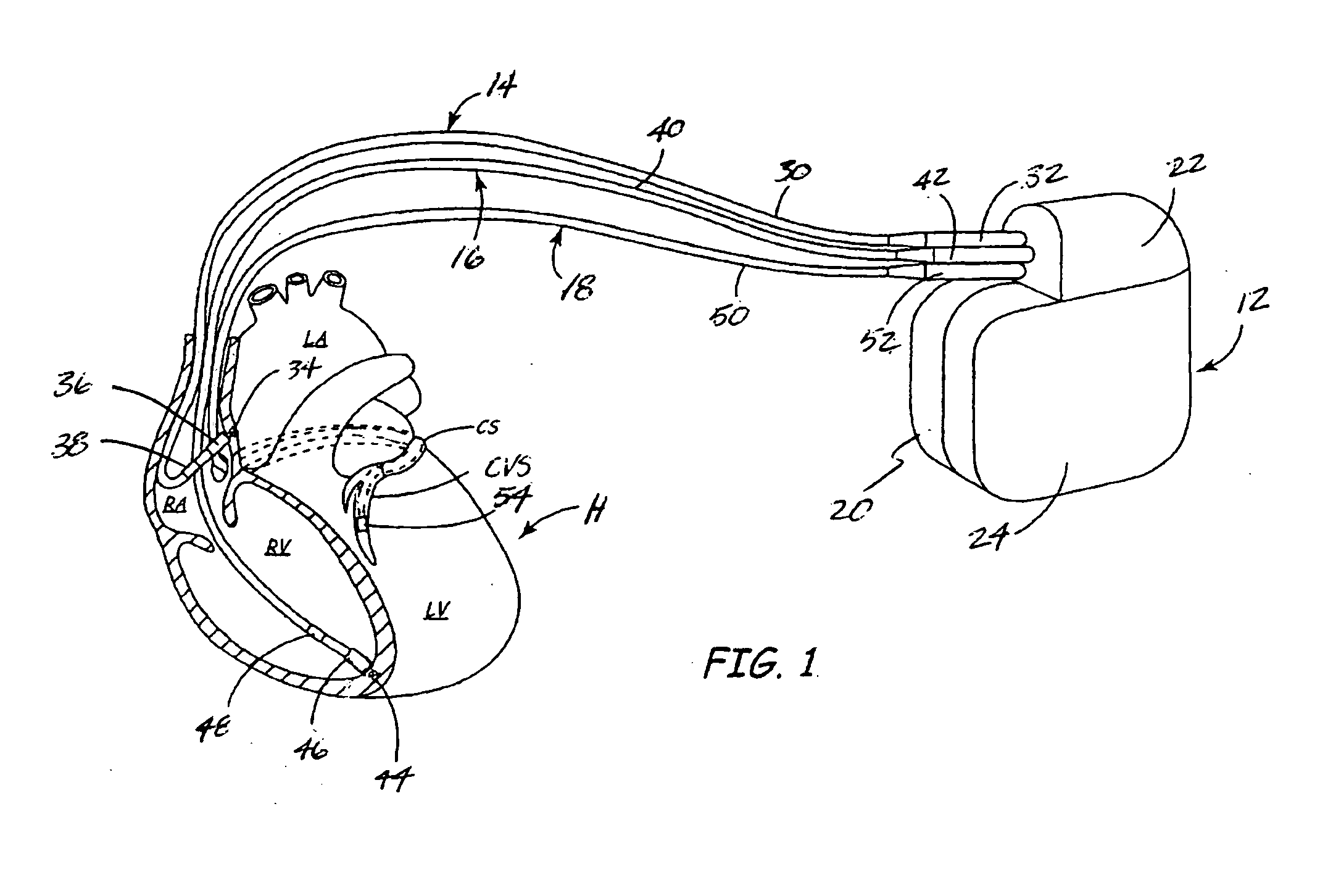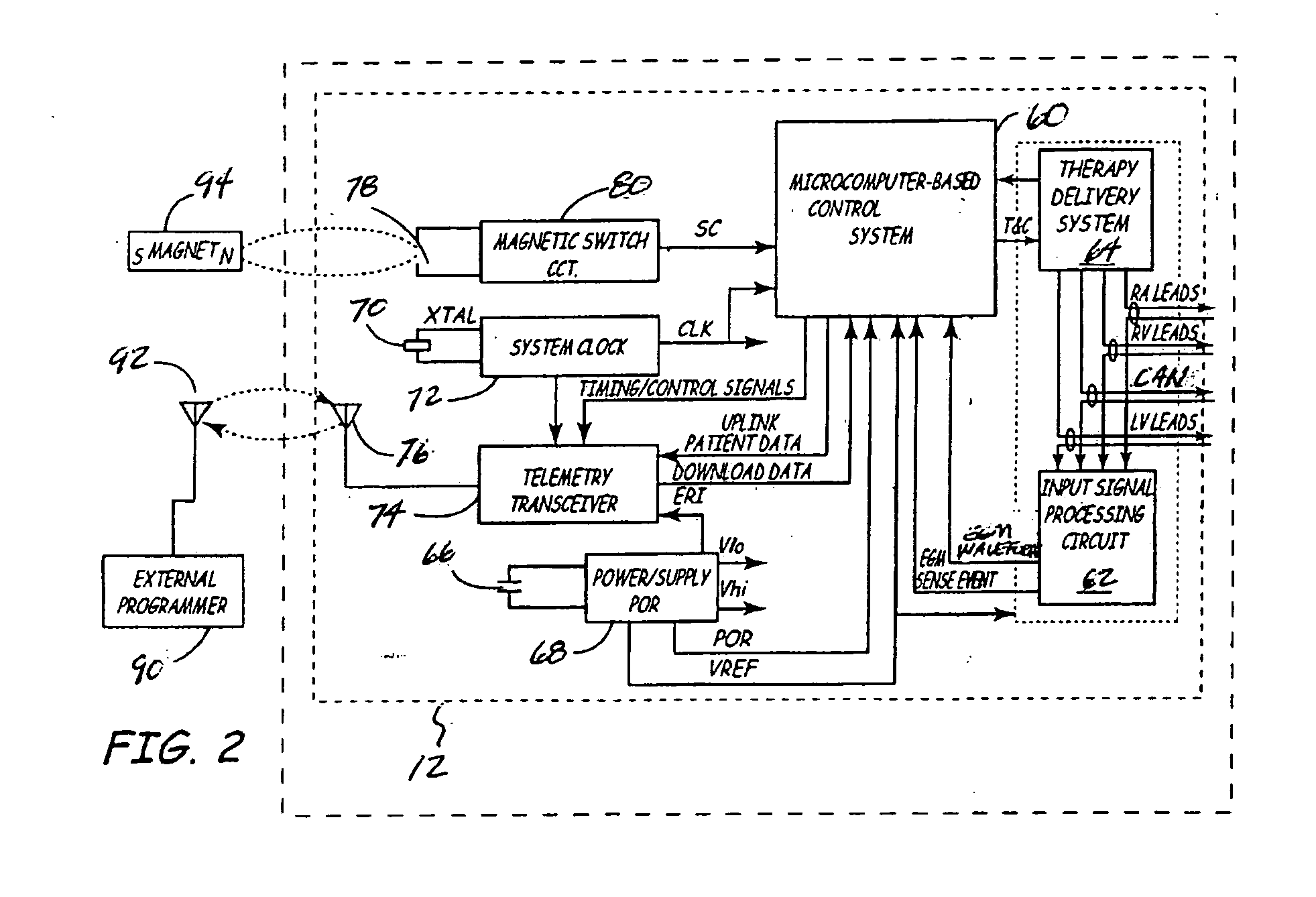Method and apparatus for detecting left ventricular lead displacement based upon EGM change
a technology of egm change and displacement detection, applied in the field of cardiac rhythm management systems, can solve the problems of poor quality of life, difficulty in delivery of left ventricular leads, and need of heart transplant or death
- Summary
- Abstract
- Description
- Claims
- Application Information
AI Technical Summary
Problems solved by technology
Method used
Image
Examples
Embodiment Construction
[0017]FIG. 1 shows cardiac resynchronization therapy (CRT) system 10, which restores ventricular synchronization in heart H by delivering pacing pulses to one or more chambers of heart H. In FIG. 1, heart H is shown in a partially cutaway view illustrating right atrium RA, left atrium LA, right ventricle RV, left ventricle LV, coronary sinus CS, and coronary venous system CVS.
[0018] CRT system 10 includes pacemaker 12, right atrial (RA) lead 14, right ventricular (RV) lead 16, and left ventricular (LV) lead 18. As shown in FIG. 1, pacemaker 12 includes housing or canister 20, header 22 and can electrode 24. The circuitry and power source of pacemaker 12 are located within housing 20. The circuitry communicates with leads 14, 16, and 18 through electrical connectors within header 22. Can electrode 24 is formed on or is a part of the outer surface of housing 20, and acts as a remote indifferent electrode with respect to one or more of the electrodes carried by leads 14, 16, and 18.
[...
PUM
 Login to View More
Login to View More Abstract
Description
Claims
Application Information
 Login to View More
Login to View More - R&D
- Intellectual Property
- Life Sciences
- Materials
- Tech Scout
- Unparalleled Data Quality
- Higher Quality Content
- 60% Fewer Hallucinations
Browse by: Latest US Patents, China's latest patents, Technical Efficacy Thesaurus, Application Domain, Technology Topic, Popular Technical Reports.
© 2025 PatSnap. All rights reserved.Legal|Privacy policy|Modern Slavery Act Transparency Statement|Sitemap|About US| Contact US: help@patsnap.com



